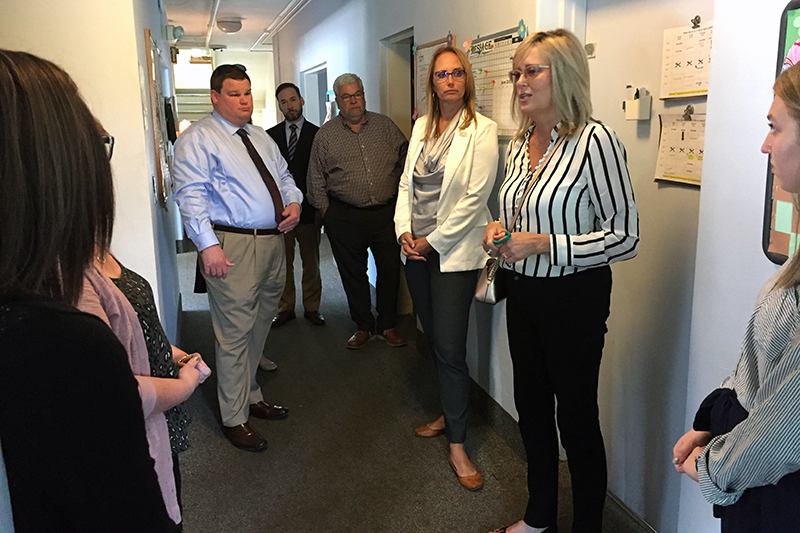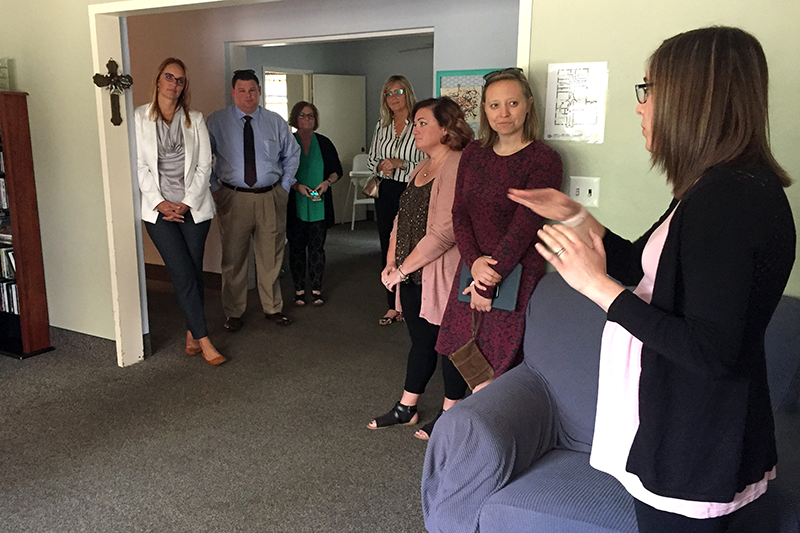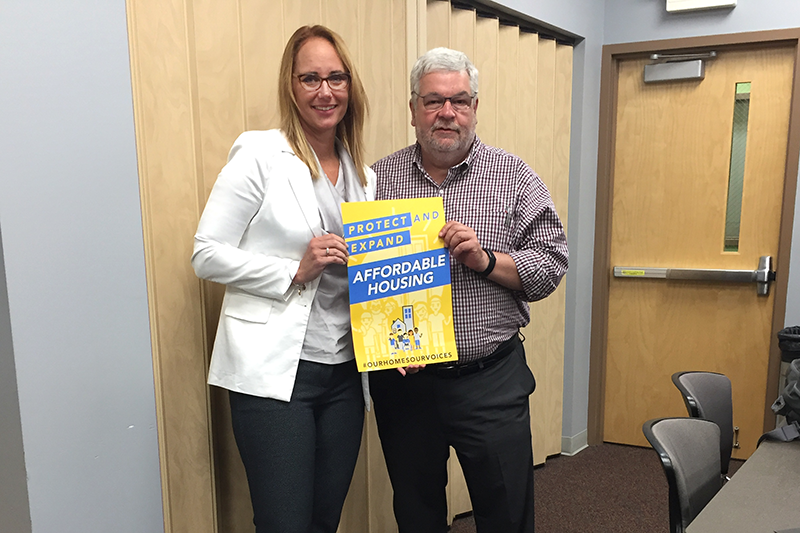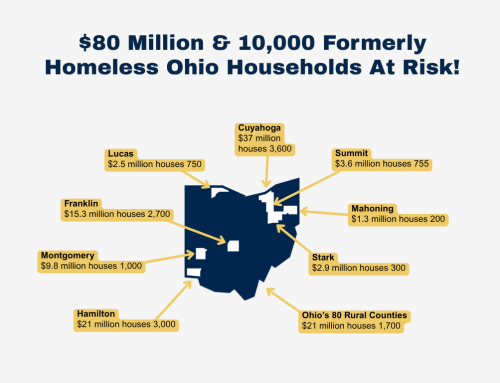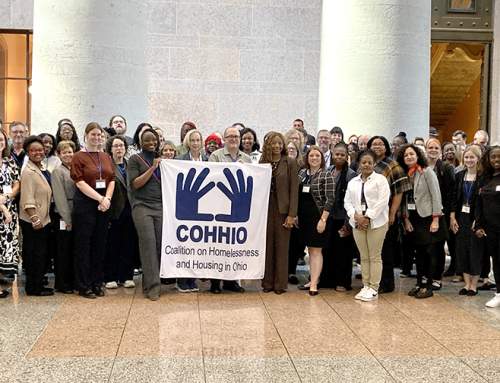Former Mayor Lydia Mihalik, who now oversees housing and community development programs for the state, returned home Friday to see firsthand how the Findlay Hope House restores stability to families and children experiencing homelessness in Hancock County.
Mihalik, whom Gov. Mike DeWine appointed director of the Ohio Development Services Agency earlier this year, joined Sen. Rob McColley (R-Napoleon), and representatives of Hope House, Congressman Bob Latta’s (R-Bowling Green) office, Hancock County Alcohol, Drug Addiction & Mental Health Services, Findlay City Schools, and Habitat for Humanity of Hancock County to discuss how the state can help reduce homelessness and housing insecurity in the region.
“People in Findlay and Hancock County are caring and compassionate examples to others,” said Mihalik, director of Ohio’s economic development agency. “Gov. DeWine’s budget provides important investment to support these programs and the families they help.”
Hope House Executive Director Sue Lehman said her organization helped 208 families transition from homelessness into permanent housing in 2018. She noted that 72 percent of the homeless families her group serves are employed.
Starr Laytart, Hope House program supervisor, said the lack of affordable housing in Findlay is a major factor behind increasing homelessness in the area.
The average cost of rent for a three-bedroom apartment in Hancock County is $1,014 per month, which is well out of reach for many families working low-wage jobs in the region, she said. “There’s just so many people who need a little hand up to get back on their feet.”
Bill Faith, executive director of the Coalition on Homelessness and Housing in Ohio, said state funding for local homeless and housing programs has declined significantly, while homelessness has increased.
The number of homeless children increased by 25 percent over the past five years to 21,000, he said. That includes nearly 3,000 babies under age one, a number that has increased by 53 percent in five years.
“Children’s homelessness is an alarming problem, but it’s a problem we can solve,” Faith said, noting that the number of homeless veterans in Ohio decreased significantly in recent years after Washington prioritized funding and services for veterans homelessness. “We know that programs like the Hope House do great work helping people overcome homelessness. But they don’t have the funding they need to meet the growing demand.”
COHHIO and the Home Matters to Ohio coalition are requesting the state legislature amend the biennial budget bill currently under negotiation to generate additional revenue for Ohio Housing Trust Fund, the main source of state funding for local homeless and affordable housing programs. The Trust Fund has not seen an increase in 16 years.
Wendy McCormick, executive director of the local Habitat for Humanity, said the Ohio Housing Trust Fund provides funding for her organization to repair homes so that low-income seniors can continue living in their own homes.
“A leaking roof could drive more people into homelessness,” she said, adding that home repair and accessibility upgrades help low-income homeowners in Hancock County save the state money by avoiding premature placement in nursing homes and other institutions.
